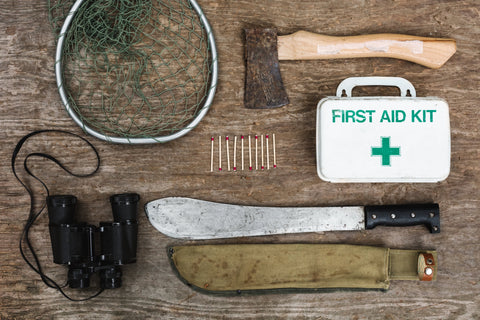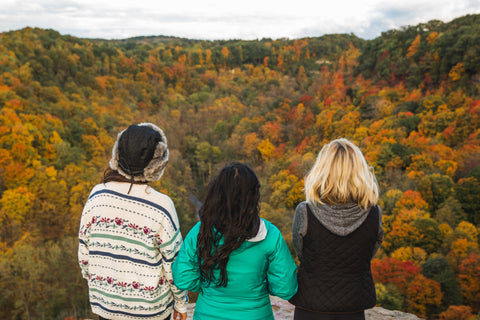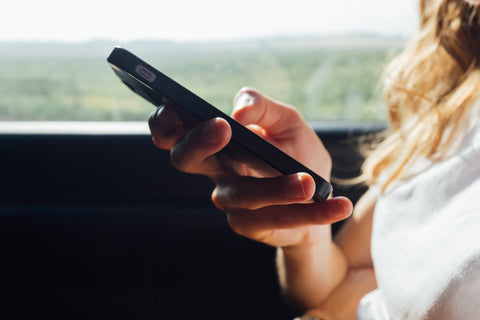If 2020 has taught us anything it’s that disasters can strike when we least expect it. Whether it’s global pandemics, tornadoes, flash floods, blizzards, or hurricanes, we’re all paying closer attention when the weatherman starts talking about a potential for severe weather. No matter what area of the country you’re from, chances are you’ll experience some kind of natural disaster at some point that will require you to be prepared. Even if it doesn’t require you to leave your home, it’s always best to have supplies in the event you’re stuck at home.
Let’s face it: the majority of us are not prepared for disasters and the thought of prepping for an emergency just doesn’t make much sense if we’ve never experienced one. Far too many Americans were caught off guard this year not just because of the pandemic, but with the massive wildfires and one of the most active hurricane seasons in recent memory.
Having an emergency kit in your home is vital. Plus, preparing your kit is an activity the whole family can take part in so they’re aware of what to do in an emergency.
There is no shortage of online resources where you can find resources on how to build your own emergency kit. This list features the most commonly included items from several sources. Of course, if you feel your family needs a little more than this list or common lists, there is no perfect way to be prepared.
Emergency Kit Contents
- Drinking Water - Keep 1 gallon of water per person, per day (3 days for evacuation & 2wk supply in your home)
- Food - Canned and other non-perishable items that are easy to prepare (3 days for evacuation & 2wk supply in your home)
- A Can Opener - It’s easy to forget this item, but you’ll regret it if you do. Make sure to pack this as soon as you pack all the food you need.
- Flashlight - Crankable flashlights are useful as they don’t require additional batteries to work. But if you decide to pack a traditional flashlight, make sure you have enough batteries.
- Battery Powered or Hand-Crank Radio - A weather radio is the best option
- Batteries - Pack the common types like AA, AAA, or D batteries. Make sure you pack a few extra as well as a battery tester.
- Phone Charger - Secondary power supplies like cases with batteries or even solar chargers will keep your phone working when the initial charge ends.
- First Aid Kit - Make sure your kit has enough supplies for you and your family. You’ll also want to check your kit periodically to make sure the quality of the medical items are still good and don’t need to be replaced.
- Medications - Keep at least a seven (7) day supply of all prescription medications as well as OTC medications like aspirin, ibuprofen, antacids, etc.
- Hand Tools - Basic hand tools like pliers, a wrench, and a screwdriver set come in handy for repairs
- Dust Masks - Painter’s masks like N95 masks are perfect to prevent breathing in dust and harmful particles
- Cash - During a disaster, the power will likely be out for quite a while. This means card machines and ATMs likely will not work. Your debit and credit cards will be useless. To buy supplies during this time, keep extra cash in a watersafe container or pouch.
- Toiletries - Toilet paper, toothpaste, tooth brushes, and moist towelettes will help you keep good hygiene.
- Plastic Bags / Garbage Bags with ties - Trash bags are often overlooked, but you’ll need a way to practice good sanitation.
A Few Extras
- Matches - Ordinary stick matches in a waterproof container will help you start a fire if you need to get warm or need light.
- Sleeping Bags or Warm Blankets - This basic camping gear will prevent you from having to sleep on the ground or keep you warm while sleeping.
- Copies of Important Documents - This is important, even if not part of your emergency kit. Keep copies of insurance policies, identification cards, birth certificates, and even bank account records in a waterproof container or fireproof safe. In the event of a flood or fire, you’ll have access to important information to help you get back on your feet.
- Pet Food - If evacuating or sheltering in place with your pet, they’ll need their own food so they aren’t relying on scraps or human food.
- Eye Glasses and Contact Solution - Keep a second pair of eyeglasses in your kit in the event your main pair breaks. Contact solutions will keep your contacts useful until you can get new ones.
- Clothes - A bag full of fresh clothes you can wear for a few days will help with hygiene. If there’s no power, you may be handwashing clothes for a bit so pack enough for a few days if you can.
Have a few more items you keep in your emergency kit we might have missed? Feel free to share them in the comment section, as well as any other ideas you might have. For more information about packing an emergency kit, visit these helpful sites:
- Red Cross https://www.redcross.org/get-help/how-to-prepare-for-emergencies/survival-kit-supplies.html
-
SafeWise
https://www.safewise.com/blog/emergency-kits/ -
Center for Disease Control (CDC)
https://www.cdc.gov/ncbddd/hemophilia/documents/FamilyEmergencyKitChecklist.pdf?s_cid=cs_766 -
Ready for Wildfire
https://www.readyforwildfire.org/prepare-for-wildfire/get-set/emergency-supply-kit/ - National Weather Service
https://www.weather.gov/owlie/emergencysupplieskit




Comments (0)
There are no comments for this article. Be the first one to leave a message!